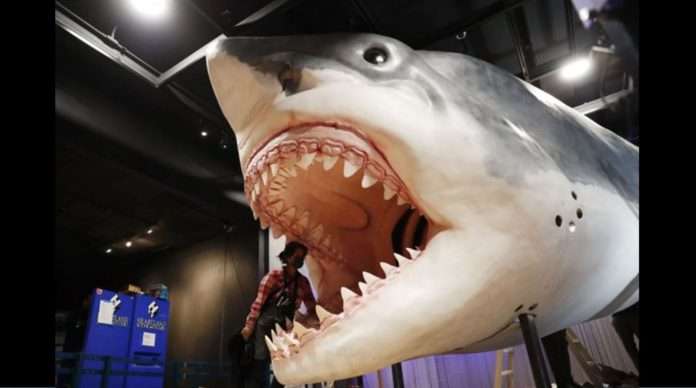
June 23 (UPI) — Megalodons, believed to be the largest species of shark that ever lived, were big enough to eat just about any animal they wanted — and were possibly cannibalistic — scientists say in a study published Wednesday.
Researchers from Princeton say they have evidence the shark species, which went extinct 3.5 million years ago, and its ancestors were at the very top of the food chain while they existed. They call this the highest “trophic level” of the food chain.
Not only did megadolons and other megatooth sharks eat fellow predators, they ate predators-of-predators. There’s even some evidence megadolons were cannibalistic.
“Ocean food webs do tend to be longer than the grass-deer-wolf food chain of land animals, because you start with such small organisms,” said lead author Emma Kast, now at the University of Cambridge, said in a press release.
“To reach the trophic levels we’re measuring in these megatooth sharks, we don’t just need to add one trophic level — one apex predator on top of the marine food chain — we need to add several onto the top the modern marine food web,” Kast said.
The findings were published Wednesday in the journal Science Advances.
Scientists have only found fragmentary remains of megalodon sharks, but analyses of teeth have led them to believe the animal reached lengths of 50 feet. The largest extant predatory shark, the great white, grows up to an average of 15 feet.
Kast and her colleagues determined the megalodon’s placement in the prehistoric marine food web by measuring the level of nitrogen isotopes in its teeth. According to the researchers, the more nitrogen-15 an organism has, the higher its trophic level.
Organisms lower on the food chain are able to turn nitrogen from the air or water into nitrogen in their bodies, while larger organisms eat them. The higher on the food chain, the more the organism excretes the lighter nitrogen-14 compared to the heavier nitrogen-15.
“The whole direction of my research team is to look for chemically fresh, but physically protected, organic matter — including nitrogen — in organisms from the distant geologic past,” said Danny Sigman, a professor of geological and geophysical sciences, and Kast’s adviser.
“Teeth are designed to be chemically and physically resistant so they can survive in the very chemically reactive environment of the mouth and break apart food that can have hard parts,” he added.
Sharks are constantly growing and losing teeth, unlike humans, so their teeth are among the most abundant fossil types in the ocean.
“And within the teeth, there is a tiny amount of organic matter that was used to build the enamel of the teeth — and is now trapped within that enamel,” Sigman said.
Researchers developed a new technique for extracting and measuring the nitrogen-15, involving the use of dentist drills, chemicals and microbes that turn the nitrogen into nitrous oxide which can then be measured.
Sigman said his team and other scientists are now applying this technique to research involving mammalian and dinosaur teeth.


